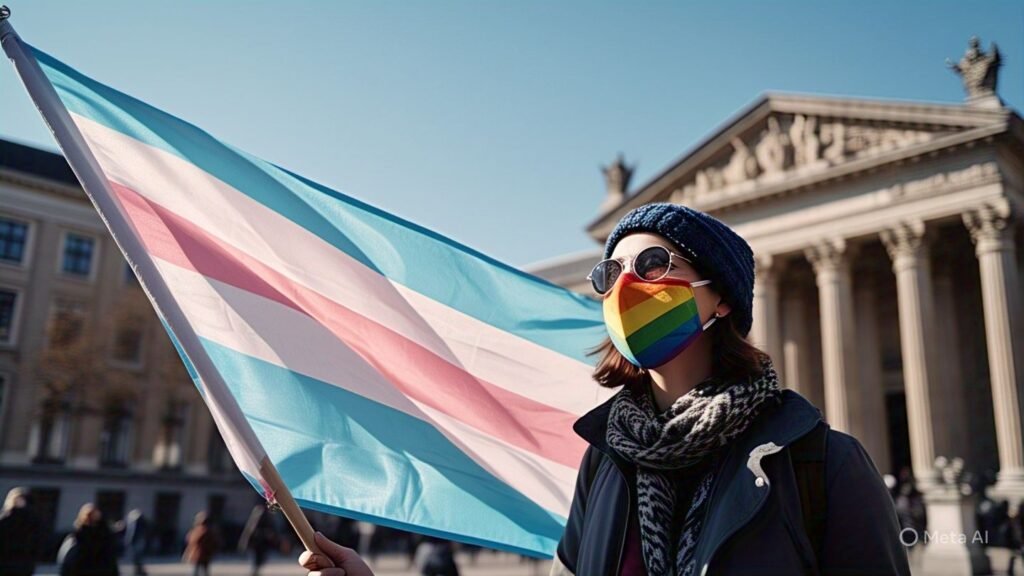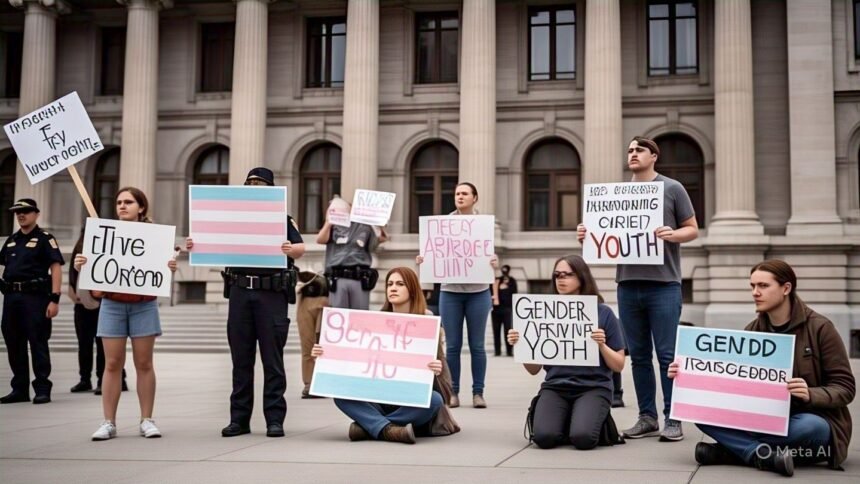Introduction: gender-affirming treatment for transgender youth
gender-affirming treatment for transgender youth,The Supreme Court on Wednesday upheld Tennessee’s ban on gender-affirming treatment for transgender youth in a landmark ruling that strengthens efforts by conservative lawmakers to enact and maintain similar controversial laws targeting transgender Americans.
Former President Donald Trump, gender-affirming treatment for transgender youth,who campaigned partly on ending what he called “transgender lunacy,” took multiple steps aimed at reversing progress made by the transgender community.
Approximately half of the states in the nation now have bans similar to Tennessee’s. Federal courts have delivered mixed rulings on the constitutionality of such laws, gender-affirming treatment for transgender youth,with the Tennessee case—brought by the Biden administration—being the first to reach the Supreme Court.
Chief Justice John Roberts authored the majority opinion, which was joined by five other conservative justices. The three liberal justices dissented strongly.
He emphasized that the Equal Protection Clause does not resolve these ongoing disputes.
Following the ruling, judges reviewing bans like Tennessee’s will apply the lowest level of judicial scrutiny, increasing the likelihood that similar restrictive laws will be upheld in the future.
Advocates for transgender rights condemned the ruling. Chase Strangio of the ACLU called it “a devastating loss for transgender people, our families, and everyone who cares about the Constitution.”
Samantha Williams, a plaintiff’s mother, shared her family’s heartbreak in an opinion piece, warning that the decision will make accessing gender-affirming treatment for transgender youth even more difficult.
The political context influenced the case,gender-affirming treatment for transgender youth, with policies under former President Trump aimed at restricting transgender rights, including in the military and passport documentation.
Tennessee’s SB 1 bans hormone therapy and puberty blockers for transgender minors, and imposes penalties on medical providers who offer such treatments.gender-affirming treatment for transgender youth,Although the law also prohibits gender-affirming surgeries, that issue was not part of this case.
The law specifically forbids medical care aimed at helping minors identify with a gender different from their sex assigned at birth or to treat distress related to gender dysphoria.
Initially challenged by transgender minors,gender-affirming treatment for transgender youth their families, and medical professionals, the lawsuit was later supported by the Biden administration. Lower courts had conflicting rulings on the law’s constitutionality.
The Supreme Court’s decision aligns with a growing number of GOP-led states passing similar bans, affecting over 110,000 teenagers nationwide.
During oral arguments, Chief Justice Roberts emphasized that this is a political question best resolved by legislatures, while Justice Sotomayor passionately defended the rights of transgender youth and criticized the Court’s abdication of its judicial role.This news is published by: Movie Box

Positive Aspects:
Supporters view it as protecting children:
The ruling is seen by some, including Tennessee’s Attorney General, gender-affirming treatment for transgender youth,as a “common sense” decision that prioritizes protecting minors from medical treatments they consider experimental or harmful.
Legal clarity for states:
The Supreme Court’s ruling sets a precedent, potentially allowing states to pass and uphold similar laws regulating gender-affirming treatment for transgender youth, providing clearer legal guidelines for lawmakers.
Judicial restraint:
The Court deferred to legislatures on a contentious issue, avoiding deeper judicial intervention, which some see as respecting democratic processes.
Focus on scientific debate:
The majority opinion acknowledged the ongoing scientific and policy debates, reflecting the complexity of gender-affirming treatment for transgender youth.
Negative Aspects:
gender-affirming treatment for transgender youth,
Setback for transgender youth and families:
The decision limits access to gender-affirming treatment,gender-affirming treatment for transgender youth, which medical experts and advocates argue is essential for the mental health and well-being of transgender youth.
Potential increase in discrimination:
The ruling lowers judicial scrutiny on such laws, potentially encouraging more legislation that discriminates against transgender youth under the guise of medical regulation.
Criticism of ignoring sex discrimination:
Dissenting justices argue the law discriminates based on sex and the ruling ignores this, undermining protections against sex-based discrimination.
Emotional and social harm:
Families of transgender youth express devastation,gender-affirming treatment for transgender youth, fearing the decision will create barriers to lifesaving healthcare and exacerbate stigma.
Political influence on healthcare:
The decision is criticized for allowing political and ideological views to override medical consensus on gender-affirming treatment for transgender youthPositive Aspects
Legal Clarity for States: The ruling provides a judicial precedent that may make it easier for states to enact or uphold similar bans by applying a lower standard of judicial review.
Support for State Sovereignty: Tennessee Attorney General Jonathan Skrmetti described the ruling as a “common sense” victory that respects state decisions on healthcare policies for children.
Scientific Debate Acknowledged: Chief Justice John Roberts noted the complexity of medical and policy debates around gender-affirming care and emphasized that such matters are best resolved by lawmakers rather than courts.
Impact on Transgender Youth: The decision is seen as a significant setback for transgender minors and their families, restricting access to medically endorsed treatments that support gender identity and well-being.
Criticism of Judicial Reasoning: Justice Sonia Sotomayor, in a powerful dissent, condemned the ruling as abandoning transgender children to “political whims” and criticized the court for obscuring the law’s clear discrimination based on sex.
Potential for Increased Discrimination: The ruling may encourage legislatures to pass more laws that discriminate against transgender individuals by framing sex-based discrimination as unrelated to gender identity.
Emotional Toll: Families affected by the ruling expressed devastation, emphasizing how the decision will hinder access to lifesaving healthcare and create further challenges for transgender youth.
Political Context
gender-affirming treatment for transgender youth,
The ruling comes amid broader political efforts, notably by former President Donald Trump, to roll back transgender rights in the military, passports, and other areas. Several GOP-led states have enacted similar bans, impacting over 110,000 teenagers nationwide who live under restrictions on puberty blockers and hormone therapy.
.
